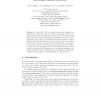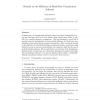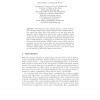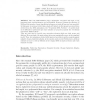44 search results - page 3 / 9 » A Multi-trapdoor Commitment Scheme from the RSA Assumption |
PKC
2005
Springer
14 years 14 days ago
2005
Springer
To sign with RSA, one usually encodes the message m as µ(m) and then raises the result to the private exponent modulo N. In Asiacrypt 2000, Coron et al. showed how to build a secu...
CRYPTO
2000
Springer
13 years 11 months ago
2000
Springer
Abstract. Non-committing encryption enables the construction of multiparty computation protocols secure against an adaptive adversary in the computational setting where private cha...
TCS
2010
13 years 1 months ago
2010
Constructions of cryptographic primitives based on general assumptions (e.g., one-way functions) tend to be less efficient than constructions based on specific (e.g., number-theor...
CTRSA
2007
Springer
13 years 8 months ago
2007
Springer
Abstract. Multi-signatures allow multiple signers to jointly authenticate a message using a single compact signature. Many applications however require the public keys of the signe...
EUROCRYPT
1999
Springer
13 years 11 months ago
1999
Springer
Since the Diffie-Hellman paper, asymmetric encryption has been a very important topic, and furthermore ever well studied. However, between the efficiency of RSA and the security of...




